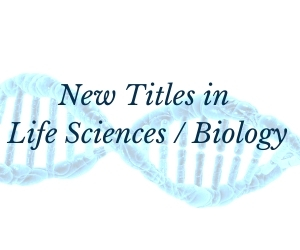System Upgrade on Tue, May 28th, 2024 at 2am (EDT)
Existing users will be able to log into the site and access content. However, E-commerce and registration of new users may not be available for up to 12 hours.For online purchase, please visit us again. Contact us at customercare@wspc.com for any enquiries.
New Edition: Non-Covalent Interactions in Proteins (2nd edition)
Although textbooks on the physics of condensed matter consider non-covalent interactions in detail, their application for analysis of protein properties is often poorly presented or omitted. On the other hand, books on biochemistry, molecular modeling or molecular simulation introduce these interactions in the context of the corresponding topic, which sometimes results in superficial explanations of their nature. This book succeeds in uniting comprehensive considerations of non-covalent interactions with the specificity of their application in protein sciences.
The ideal aid for students of physics or chemistry, with interests in biology and biophysics, the book can also be useful for students of biology, biochemistry, or biomedicine who want to extend their knowledge of how protein properties are described at the molecular level.
Sample Chapter(s)
Chapter 1: Introduction (883 KB)
- Overview of Protein Structural Elements and Basic Definitions
- Non-Covalent Interactions and Structure-Function Relationships in Proteins
- Observation of van der Waals Interactions
- Nature of van der Waals Interactions
- Potential Functions for Application in Proteins
- Approximation for Polyatomic Systems
- Nature of Hydrogen Bonds
- Geometry and Strength of Hydrogen Bonds
- Hydrogen Bonds in Proteins
- Hydrogen Bonds and Protein Stability
- Nature of Hydrophobic Interactions, Pseudo Forces
- Water
- Hydrophobic Effect
- Hydrophobic Interactions in Proteins
- Debye–Hückel Theory
- Ion-Solvent Interactions
- Calculation of Electrostatic Interactions in Proteins
- Why Does One Need to Know Ionisation Equilibria?
- Basic Definitions
- Factors Determining Ionisation Equilibria in Proteins
- Combinatorial Problem
- Cooperative Ionisation
- Allocation Variation of Polar Hydrogen Atoms
- Examples for pH-Dependent Hydrogen Bonding
- Conformational Flexibility Involving Non-Hydrogen Atoms
- Definitions
- Unfolding Induced by pH
- Modeling of Unfolded Proteins
- Thermal Stability of Proteins
























